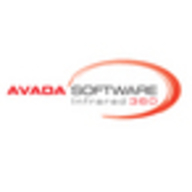

Avada Software Infrared360 and Sumo Logic Observability compete in observability and infrastructure monitoring. Sumo Logic Observability has the upper hand with superior comprehensive features, although Avada Software Infrared360 is preferred for support and pricing.
Features: Avada Software Infrared360 provides robust monitoring tools, comprehensive metrics, and reliable performance alerts. Sumo Logic Observability offers powerful analytics, advanced log management, and extensive data visualization options.
Room for Improvement: Avada Software Infrared360 could improve enhanced reporting capabilities, more intuitive navigation, and mobile app functionality. Sumo Logic Observability needs reduced complexity, better integration options, and faster query performance.
Ease of Deployment and Customer Service: Avada Software Infrared360 has a straightforward deployment process and excellent customer service. Sumo Logic Observability is sometimes more complex to deploy but also has high-caliber customer support.
Pricing and ROI: Avada Software Infrared360 offers competitive pricing and satisfactory ROI. Sumo Logic Observability, despite higher pricing, is considered valuable for its feature set and perceived long-term benefits.

Avada Software specializes in Enterprise Middleware solutions. Founded by some pioneers in SOA, MQ and J2EE technology, Avada’s Flagship product, Infrared360, is a holistic & innovative private cloud enabled portal providing self-service administration, monitoring, load testing, auditing & statistical reporting for Enterprise Middleware including IBM’s middleware stack of MQ, IIB (message broker), WAS, and Datapower, as well as other applications servers such as JBoss, TC Server, Weblogic, and other messaging technologies such as Tibco EMS and Kafka*.
Accessed via any web browser on any device, Infrared360 is a single web application, yet scales to 2500+ endpoints without deploying anything (no agents, no scripts) to those endpoints.
Using trusted ‘spaces’ and delegated visibility and control, the portal uniquely provides different business units or even different application users virtual ‘spaces’ in which to work. Within those spaces are only the objects and resources the user has been granted visibility. Role policy dictates permissions on those resources.
It is the ONLY Enterprise Messaging Solution with a built in SOA engine that lets you leverage internal and external services for managing and correcting problems within your middleware messaging environment.
*Kafka coming soon
Sumo Logic Observability is widely used for log aggregation, analysis, and SIEM capabilities. It assists in monitoring data, creating dashboards, and managing log storage.
Sumo Logic Observability helps teams with logging in production, debugging with trace IDs, and performing queries across large datasets. Developers leverage centralized logs for error detection and tracking metrics like successful transactions and data volume. Security teams integrate it with SOAR systems for automation and enhanced security investigations.
What are the key features?Industries like finance, healthcare, and technology implement Sumo Logic Observability to monitor sensitive data, manage high transaction volumes, and ensure compliance with regulatory standards. Security and development teams benefit from its robust capabilities, enabling effective collaboration and streamlined operations.
We monitor all Application Performance Monitoring (APM) and Observability reviews to prevent fraudulent reviews and keep review quality high. We do not post reviews by company employees or direct competitors. We validate each review for authenticity via cross-reference with LinkedIn, and personal follow-up with the reviewer when necessary.